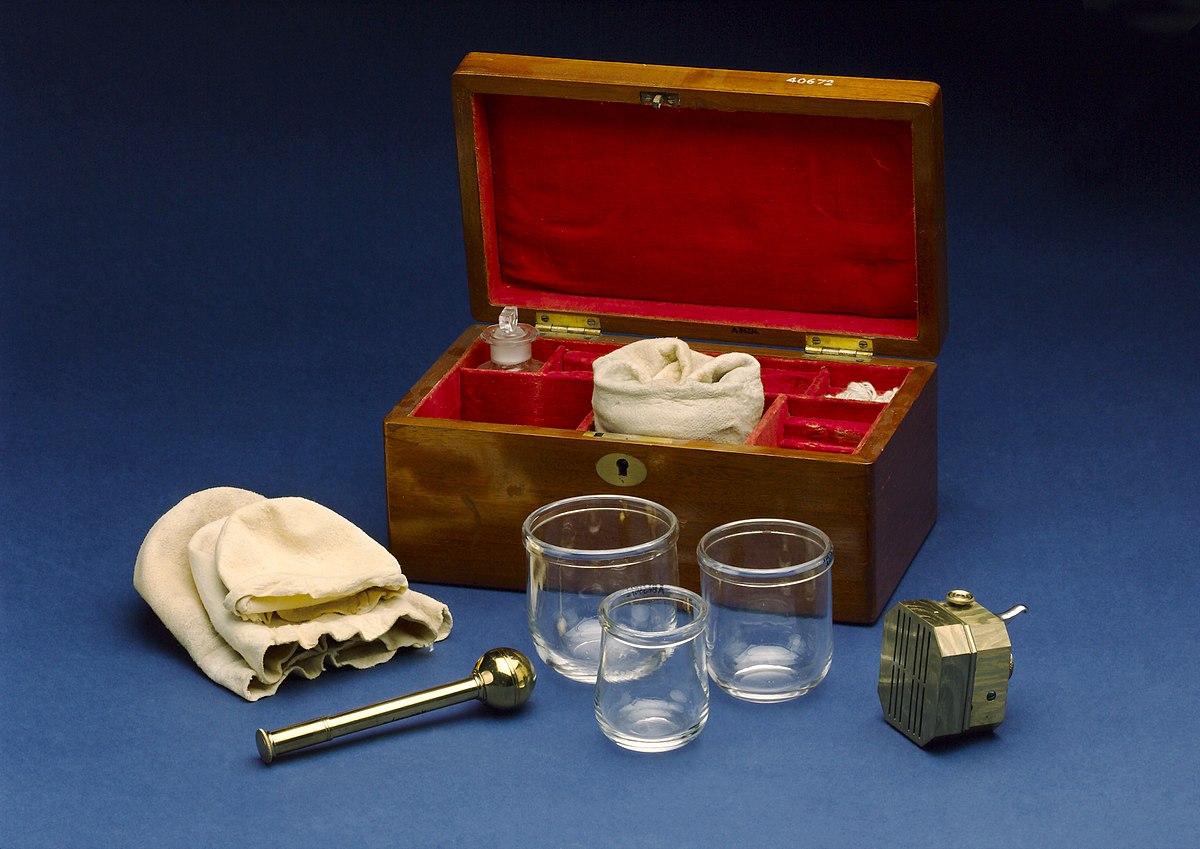You are using an out of date browser. It may not display this or other websites correctly.
You should upgrade or use an alternative browser.
You should upgrade or use an alternative browser.
Red circle question
- Thread starter todbo
- Start date
Argonaut
No, not that Providence.
- Joined
- Feb 15, 2019
- Messages
- 2,508
- Reaction Score
- 22,614

Cupping therapy - Wikipedia
What Is Cupping? Does It Work? | Cedars-Sinai
Cupping became mainstream after the 2016 Summer Olympics, when swimmer Michael Phelps showed up with round bruises on his back. Today cupping is widely used for relief of pain and muscular-skeletal injuries, such as strains, sprains, and inflammation. But does it work?
triaddukefan
Tobacco Road Gastronomer
- Joined
- Aug 26, 2011
- Messages
- 19,822
- Reaction Score
- 60,790
might have to try this out...
HuskyNan
You Know Who
- Joined
- Aug 15, 2011
- Messages
- 25,913
- Reaction Score
- 213,773
My massage therapist has done it to me when I have horrible cramps in my legs. They are excruciatingly painful if the muscle is really tight but, oh, it feels great when the circulation is restored. But, it’s not a spa-like treatment.might have to try this out...
- Joined
- Nov 13, 2013
- Messages
- 4,465
- Reaction Score
- 20,108
I wonder if anybody has set up a drive thru service. Once a week on the shoulders and low back would be great.might have to try this out...
- Joined
- Feb 7, 2019
- Messages
- 318
- Reaction Score
- 945
But does it work on migraines ?
Cupping therapy - Wikipedia
en.wikipedia.org
What Is Cupping? Does It Work? | Cedars-Sinai
Cupping became mainstream after the 2016 Summer Olympics, when swimmer Michael Phelps showed up with round bruises on his back. Today cupping is widely used for relief of pain and muscular-skeletal injuries, such as strains, sprains, and inflammation. But does it work?www.cedars-sinai.org

Bald Husky
four score
- Joined
- Jan 17, 2021
- Messages
- 2,358
- Reaction Score
- 13,881
My son had it done when we took a trip to China. There were about 9 of those on his back, looked like he was attacked by a squid. Never saw anything like it, hope I never will again.
Biff
Mega Monster Moderator
- Joined
- Aug 15, 2011
- Messages
- 3,300
- Reaction Score
- 24,898
When I was a young sprout (8-10 years old) I discovered that if I took one of our plastic drinking cups and propped it over my lower lip and chin and then sucked a vacuum in the cup real hard it stuck to my chin! What a neat trick. So I went around the house the whole day doing that. I thought I was cool.
The next morning I discovered that my chin was a semicircle of dark purple. I had to go to school like that and get hammered about it by everyone the next day.
I was cupping pioneer.
The next morning I discovered that my chin was a semicircle of dark purple. I had to go to school like that and get hammered about it by everyone the next day.
I was cupping pioneer.
Rocket009
Santa Cruz. CA
- Joined
- Jun 4, 2014
- Messages
- 870
- Reaction Score
- 3,250

Cupping – Olympic Pseudoscience
Four years ago, while watching the 2012 Olympic Games, I noticed a lot of athletes wearing colored strips in various patterns on their body. I discovered that these strips were called kinesiotape,
sciencebasedmedicine.org
psconn
Proud Connecticut WBB Fan
- Joined
- Aug 26, 2011
- Messages
- 3,239
- Reaction Score
- 14,004
Following the references to the source of the conclusion of the Cedars Sinai article, I note that it was based on a review of studies that concluded that there were too few randomized clinical trials (RCTs) done and that they are of low quality. "...the total number of RCTs included in the analysis and the methodological quality were too low to draw firm conclusions." A bold admission considering that the review was funded by the Korea Institute of Oriental Medicine.
Cupping therapy - Wikipedia
en.wikipedia.org
What Is Cupping? Does It Work? | Cedars-Sinai
Cupping became mainstream after the 2016 Summer Olympics, when swimmer Michael Phelps showed up with round bruises on his back. Today cupping is widely used for relief of pain and muscular-skeletal injuries, such as strains, sprains, and inflammation. But does it work?www.cedars-sinai.org
Last edited:
Argonaut
No, not that Providence.
- Joined
- Feb 15, 2019
- Messages
- 2,508
- Reaction Score
- 22,614
Following the references to the source of the conclusion to the Cedars Sinai article, I note that it was based on a review of studies that concluded that there were to few randomized clinical trials (RCTs) done and that they are of low quality. "...the total number of RCTs included in the analysis and the methodological quality were too low to draw firm conclusions." A bold admission considering that the review was funded by the Korea Institute of Oriental Medicine.
I wasn't trying to confirm or deny its effectiveness (but Nan says it works for her...), todbo just asked what the red circles were and I answered.
Athletes are entitled to use whatever recovery strategies they want (sans using banned substances), so if they feel like it works for them, then who's to judge?
psconn
Proud Connecticut WBB Fan
- Joined
- Aug 26, 2011
- Messages
- 3,239
- Reaction Score
- 14,004
I wasn't implying that you were taking any position at all, and my post didn't reference you in any way. IMO, for a hospital and health center, the Cedars Sinai article is oddly accommodating of psuedo-scientific practices (quoting an on-staff acupuncture practitioner), while the Wikipedia article you posted comes off as harshly skeptical of the practice (quoting noted physicians and skeptics). So...I wasn't trying to confirm or deny its effectiveness (but Nan says it works for her...), todbo just asked what the red circles were and I answered.
Athletes are entitled to use whatever recovery strategies they want (sans using banned substances), so if they feel like it works for them, then who's to judge?

CL82
NCAA Men’s Basketball National Champions - Again!
- Joined
- Aug 24, 2011
- Messages
- 59,341
- Reaction Score
- 221,447
I feel as if we missed an opportunity here by going directly to the actual answer.
Cupping therapy - Wikipedia
en.wikipedia.org
What Is Cupping? Does It Work? | Cedars-Sinai
Cupping became mainstream after the 2016 Summer Olympics, when swimmer Michael Phelps showed up with round bruises on his back. Today cupping is widely used for relief of pain and muscular-skeletal injuries, such as strains, sprains, and inflammation. But does it work?www.cedars-sinai.org
HuskyNan
You Know Who
- Joined
- Aug 15, 2011
- Messages
- 25,913
- Reaction Score
- 213,773
The evidence is anecdoctal but as Argonaut says, it works for me. Rather than using pressure to relieve a muscle spasm or to increase circulation, the cups provide a pulling on the muscle. My massage therapist does it when massaging a pressure point doesn’t work. She’ll also use a muscle stimulator, depending on the issue. It’s all drug free and non-invasive and, hey, can’t hurt to try it.Following the references to the source of the conclusion to the Cedars Sinai article, I note that it was based on a review of studies that concluded that there were too few randomized clinical trials (RCTs) done and that they are of low quality. "...the total number of RCTs included in the analysis and the methodological quality were too low to draw firm conclusions." A bold admission considering that the review was funded by the Korea Institute of Oriental Medicine.
